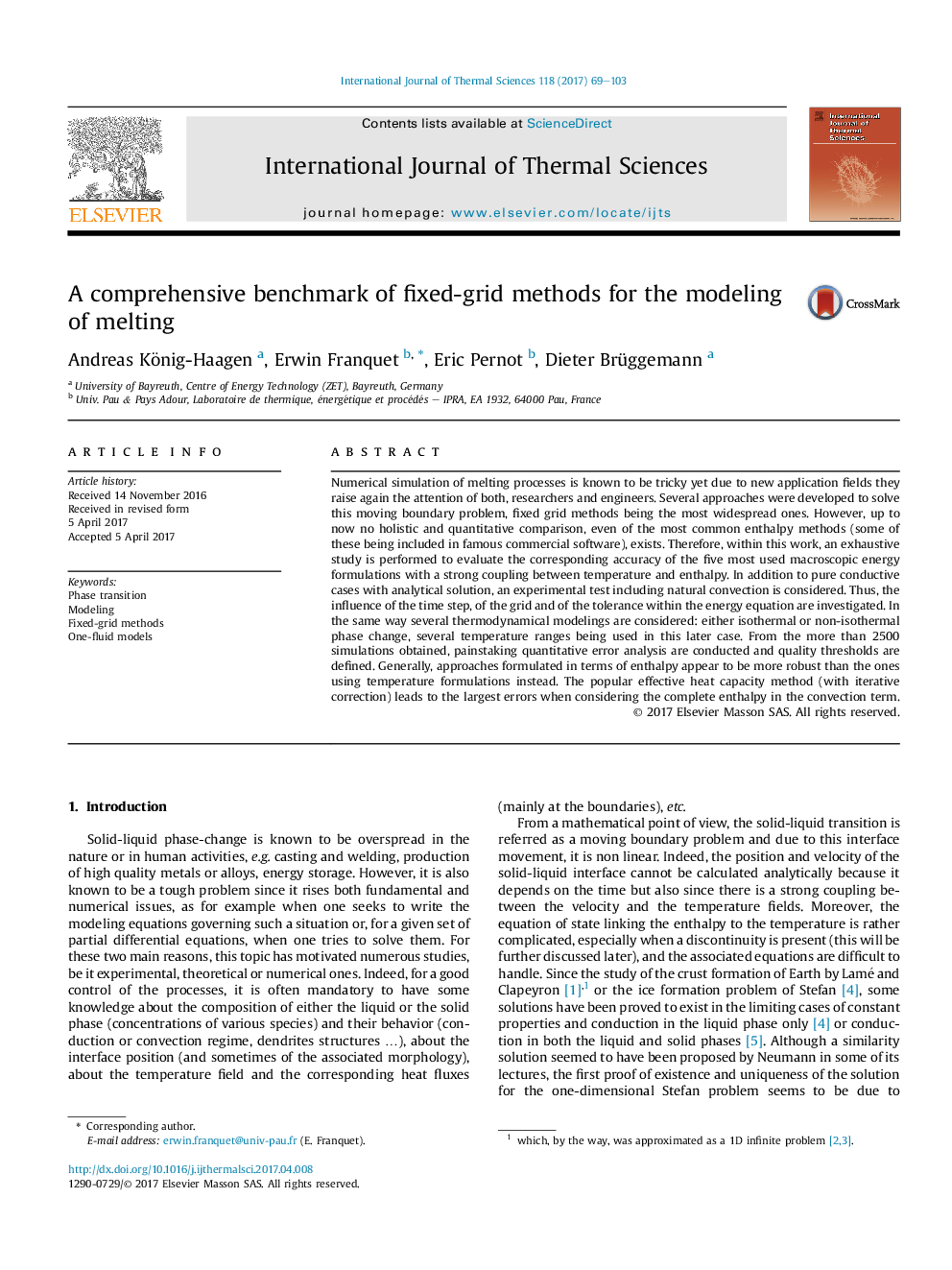| Article ID | Journal | Published Year | Pages | File Type |
|---|---|---|---|---|
| 4995264 | International Journal of Thermal Sciences | 2017 | 35 Pages |
Abstract
Numerical simulation of melting processes is known to be tricky yet due to new application fields they raise again the attention of both, researchers and engineers. Several approaches were developed to solve this moving boundary problem, fixed grid methods being the most widespread ones. However, up to now no holistic and quantitative comparison, even of the most common enthalpy methods (some of these being included in famous commercial software), exists. Therefore, within this work, an exhaustive study is performed to evaluate the corresponding accuracy of the five most used macroscopic energy formulations with a strong coupling between temperature and enthalpy. In addition to pure conductive cases with analytical solution, an experimental test including natural convection is considered. Thus, the influence of the time step, of the grid and of the tolerance within the energy equation are investigated. In the same way several thermodynamical modelings are considered: either isothermal or non-isothermal phase change, several temperature ranges being used in this later case. From the more than 2500 simulations obtained, painstaking quantitative error analysis are conducted and quality thresholds are defined. Generally, approaches formulated in terms of enthalpy appear to be more robust than the ones using temperature formulations instead. The popular effective heat capacity method (with iterative correction) leads to the largest errors when considering the complete enthalpy in the convection term.
Keywords
Related Topics
Physical Sciences and Engineering
Chemical Engineering
Fluid Flow and Transfer Processes
Authors
Andreas König-Haagen, Erwin Franquet, Eric Pernot, Dieter Brüggemann,
